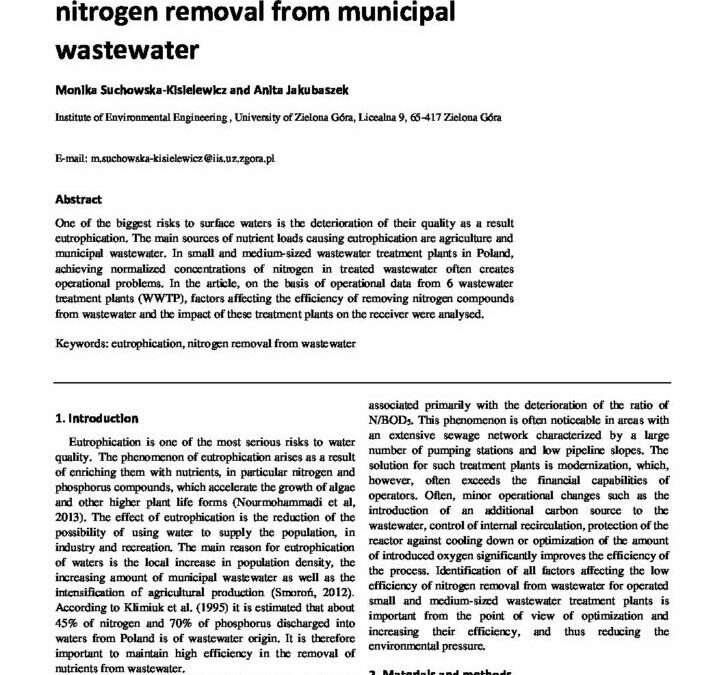The Nitrogen Legacy: Long-term Effects of Water Pollution on Human Capital

One of the biggest risks to surface waters is the deterioration of their quality as a result eutrophication. The main sources of nutrient loads causing eutrophication are agriculture and municipal wastewater. In small and medium-sized wastewater treatment plants in Poland, achieving normalized concentrations of nitrogen in treated wastewater often creates operational problems. In the article, on the basis of operational data from 6 wastewater treatment plants (WWTP), factors affecting the efficiency of removing nitrogen compounds from wastewater and the impact of these treatment plants on the receiver were analysed.
Eutrophication is one of the most serious risks to water quality. The phenomenon of eutrophication arises as a result of enriching them with nutrients, in particular nitrogen and phosphorus compounds, which accelerate the growth of algae and other higher plant life forms (Nourmohammadi et al, 2013). The effect of eutrophication is the reduction of the possibility of using water to supply the population, in industry and recreation. The main reason for eutrophication of waters is the local increase in population density, the increasing amount of municipal wastewater as well as the intensification of agricultural production (Smoroń, 2012). According to Klimiuk et al. (1995) it is estimated that about 45% of nitrogen and 70% of phosphorus discharged into waters from Poland is of wastewater origin. It is therefore important to maintain high efficiency in the removal of nutrients from wastewater.
